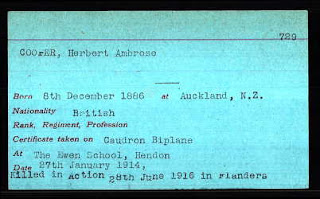While researching the Coates brothers from the Remuera memorial in Auckland I stumbled across their sister Gladys Coates.
Gladys was a woman ahead of her times with a strong sense of independence she seem to let nothing stand in her way. She learnt to drive after marrying car salesman William Henning in June 1912 at Mount Eden, Auckland. At the outbreak of WW1 she was determined to follow her two brothers and husband to the Middle East by offering her services to the authorities as a driver however, her services were rejected. Not to be deterred Gladys raised money and paid for her own passage and sailed to Eqypt where she joined the Volunteer Sisterhood and worked as a driver operating from the Ghaza Hospital.
Auckland Star, Volume XLVI, Issue 280, 24 November 1915
From the Middle East she went on to England where she was taken on by the Motor Transport Section of the N.Z.E.F. in May 1917. She rose to the lofty position of Head Lady Driver driving ambulances at Hornchurch, Walton on Thames and Brockenhurst hospitals. In January 1919 she was discharged after she contracted influenza and in 1920 she was awarded the M.B.E. On a sadder note her husband William Henning died of wounds in 1918 after being awarded the the Military Cross.
Gladys also holds the honour of being the first women to become a full member of the New Zealand Returned Services Association (RSA).
Kai Tiaki : the journal of the nurses of New Zealand, Volume XII, Issue 3, July 1919
In April 1920 she remarried Frederick Sandford in Sydney, Australia. Frederick had been a Squadron Leader in the Royal Air Force but sadly the marriage ended in divorce in 1928. In December 1925 against fierce opposition she became the first woman in New Zealand to gain a pilot's license, despite gaining her pilot's license she pursued a career as a motorist and her many pursuits were reported by the press.
"ROUND AUSTRALIA" CONTEST"
Evening Post, Volume CXXIII, Issue 82, 8 April 1937, Page 19
To find out more about her career follow the link below











































